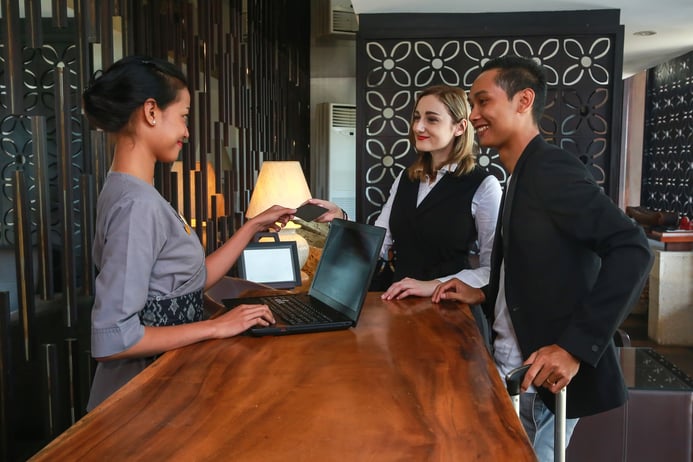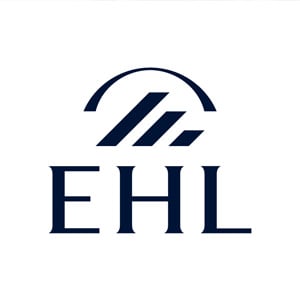Guest-facing technology is changing the way people experience hotels and we're here for it. Instead of relying solely on staff, guests now have access to tools that give them more control over their stay.
With rising expectations and accessible technology, hotels and resorts are embracing these tools to stay competitive and deliver smoother, smarter service.
In this article, we will look at the main categories of guest-facing tech, the advantages they offer to both guests and operators, the challenges that come with implementation, and practical strategies for getting it right.
Use Cases

In hospitality, guest-facing technology includes all the digital tools and systems that guests use directly to make their stay easier and more enjoyable. These are built to add convenience, create more personalized experiences, and help hotels keep service consistent.
They show up at different points in a guest’s journey, from check-in to check-out, and give travelers new ways to interact with the property. Looking at the main use cases of this technology makes it easier to understand how it is changing what guests expect from modern hotels.
Check-In and Check-Out Solutions
Check-in and check-out systems has become a cornerstone of modern hospitality, transforming how guests begin and end their stays.
Traditional front desk interactions are now complemented (or in some cases replaced) by mobile check-ins, self-service kiosks, and digital platforms that allow guests to manage the process on their own schedule.
Keyless room entry, through smartphones or electronic key cards, adds an extra layer of convenience and security, eliminating the need for physical keys while giving guests direct access to their rooms.
These solutions not only reduce wait times and streamline staff operations but also set the tone for a seamless, personalized experience from the moment guests arrive. By integrating these technologies, hotels can meet the expectations of today’s travelers who value speed, flexibility, and control over their stay.
In-Room Facilities

In-room technology plays a significant role in shaping the guest experience by bringing convenience and personalization directly into the guest’s private space.
Modern rooms often feature smart TVs, voice-activated assistants, and other IoT-enabled devices that allow guests to control entertainment, lighting, temperature, and other amenities with ease.
These systems can learn guest preferences and adjust settings automatically, creating a tailored environment that enhances comfort and satisfaction.
Beyond convenience, in-room technology also allows hotels to offer additional services and information, such as ordering room service, accessing hotel facilities, or exploring local attractions, all from a single interface.
By embedding technology into the room itself, properties can create a more engaging and seamless stay that aligns with the expectations of today’s travelers.
Mobile Apps and Digital Concierge Services
Mobile apps and digital concierge services allow guests to interact with hotels in ways that are convenient, immediate, and highly personalized. Through these platforms, guests can manage bookings, modify reservations, and request services such as room service or special amenities without having to contact the front desk.
Many apps also provide curated local recommendations, event information, and itinerary planning tools, helping guests explore their destination with ease. By centralizing communication and services in one accessible interface, these technologies give guests greater control over their stay while enabling hotels to deliver timely, tailored experiences.
The use of mobile apps and digital concierge services creates a seamless connection between guests and the property, enhancing satisfaction and engagement throughout the visit.
Payment and Billing
Payment and billing technology simplifies financial transactions for both guests and hotels, creating a smoother and more transparent experience.
Contactless payment systems allow guests to settle charges quickly using smartphones, cards, or wearable devices, reducing the need for physical cash or prolonged interactions at the front desk.
Automated billing and invoicing streamline internal processes by generating accurate statements, tracking payments, and integrating with property management systems. These technologies not only save time but also enhance accuracy and reduce the likelihood of errors.
By providing flexible, efficient, and secure payment options, hotels can improve guest satisfaction while supporting efficient financial operations behind the scenes.
Benefits of Guest-Facing Tech

One of the biggest advantages of guest-facing technology is the boost it brings to operational efficiency. By automating routine tasks, hotels can ease the workload on front desk and concierge staff, freeing them to focus on meaningful, guest-focused interactions.
Streamlined communication tools and automated workflows improve productivity, reduce errors, and help teams deliver more consistent service across the board.
These technologies also generate valuable insights into guest behavior and preferences. From tracking booking patterns and service requests to monitoring in-room activities, hotels gain a clearer picture of what guests want.
This information supports smarter decision-making, whether it is creating targeted promotions, offering personalized experiences, or refining services.
At the same time, properties that adopt modern solutions demonstrate a commitment to innovation, which is always good. In a competitive market, this reputation can set a hotel apart.
Implementation
Rolling out new technology in a hotel setting requires careful planning, since costs, training, and integration all play a role in its success. The upfront investment in hardware, software, and system integration can be substantial, and ongoing maintenance must be accounted for in long-term budgets.
To justify the spend, every investment should tie back to clear business goals, whether that is reducing wait times, improving operational efficiency, or boosting guest satisfaction.
Staff readiness is just as important, as employees need to feel confident using the tools themselves and guiding guests through them. Technology should be positioned as a way to elevate service rather than as a replacement for human interaction.
The most effective approach is to start with areas that make a visible impact on the guest journey, such as check-in, mobile applications, or in-room controls. A phased rollout helps teams adapt gradually, fine-tune processes, and build guest trust along the way.
Seamless integration with existing systems ensures that information flows smoothly across departments and prevents gaps in service. Gathering guest feedback provides valuable insight into how the technology is being used and where improvements are needed.
Training programs should focus not only on technical use but also on how staff can incorporate these tools into a service-oriented approach, ensuring the human side of hospitality remains front and center.
The Future of Hospitality Tech

Artificial intelligence is expected to play a larger role in personalization, allowing hotels to anticipate guest needs and recommend services before requests are made. Virtual and augmented reality can offer immersive previews of rooms, amenities, and local attractions.
The expansion of IoT in hospitality will make rooms and facilities increasingly interconnected. Predictive analytics will allow operators to plan resources more efficiently and respond to guest preferences proactively.
These technologies will continue to transform the way guests experience hospitality, setting new standards for service and convenience.
Looking Ahead
Technology is steadily reshaping the way hotels and resorts connect with their guests, making stays more convenient, personalized, and efficient. When used well, these tools not only improve satisfaction but also encourage guests to return.
The key is adopting technology thoughtfully so it enhances the human side of hospitality instead of overshadowing it. With careful planning and strategic rollout, hotels can create long-term value for both their teams and their guests.
By keeping up with new trends and fine-tuning services along the way, hospitality businesses can stay competitive while delivering experiences that align with the expectations of today’s travelers.




